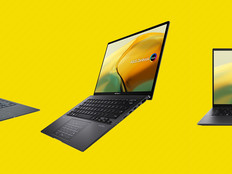45 Years of Click: The Computer Mouse Marks a Significant Milestone
If you ask the average person, “Who invented the computer mouse?” you might be told Steve Jobs or, perhaps, Bill Gates. Those answers couldn’t be more wrong.
While those tech giants played a huge role in popularizing and fine-tuning that little piece of ubiquitous handheld hardware in the 1980s — the former with the Mac and the latter with Windows PCs — neither had a hand in the device’s invention.
That happened many years earlier. The person who invented the computer mouse is Douglas C. Engelbart, along with help from his lead engineer at the Stanford Research Institute, Bill English, who put together the first mouse prototype.
A computing pioneer and engineer with a number of inventions to his credit, Engelbart — who passed away this past summer at the age of 88 — developed the first mouse prototype fifty years ago, in 1963. He received a patent for that invention seven years later, in 1970.
It is December 9, 1968, however that is the most important date in the development of the computer mouse. It was on that day that Engelbart, along with colleagues at the Augmentation Research Center at Stanford Research Institute in Menlo Park, Calif., gave the first public demonstration of the technology. As a result, that day is considered by many to be the unofficial birthday of the mouse, which, as it turns out — at 50 for Engelbart’s initial prototype and 45 for its first public demonstration — is much older than many would guess.
Attended by more than a thousand computer professionals, Engelbart’s public presentation was given as part of the Fall Joint Computer Conference held at the Convention Center in San Francisco. During his session, Engelbart demonstrated a number of additional computing innovations besides the mouse, including shared-screen collaboration with audio and video over a network, hypertext, object addressing and dynamic file linking.
For years afterward, people in Silicon Valley referred to Engelbart’s presentation as “the mother of all demos.” Engelbart’s obituary in The New York Times describes the famous session this way:
“For the event, he sat on stage in front of a mouse, a keyboard and other controls and projected the computer display onto a 22-foot-high video screen behind him. In little more than an hour, he showed how a networked, interactive computing system would allow information to be shared rapidly among collaborating scientists. He demonstrated how a mouse, which he invented just four years earlier, could be used to control a computer. He demonstrated text editing, video conferencing, hypertext and windowing.
In contrast to the mainframes then in use, a computerized system Dr. Engelbart created, called the oNLine System, or NLS, allowed researchers to share information seamlessly and to create and retrieve documents in the form of a structured electronic library.
The conference attendees were awe-struck. In one presentation, Dr. Engelbart demonstrated the power and the potential of the computer in the information age. The technology would eventually be refined at Xerox’s Palo Alto Research Center and at the Stanford Artificial Intelligence Laboratory. Apple and Microsoft would transform it for commercial use in the 1980s and change the course of modern life.”
(See a complete video of the demonstration; a slideshow replica of Engelbart’s prototype mouse; and the mouse patent drawings.)
As the obituary indicates, it wasn’t until 13 years later that a personal computer, the Xerox 810, would actually ship with a mouse. And it wasn’t until Apple shipped its first Macintosh system, the 128K, that the mouse would finally become not just a mere curiosity, but rather the standard by which humans interacted with computers. It is only recently, with the rise of tablets and touch screens, that the mouse’s supremacy has begun to wane.
Xerox’s mouse, like Engelbart’s prototype, had three buttons. Famously, Steve Jobs and company went with a single button.
“We tried as many as five. We settled on three. That's all we could fit. Now the three-button mouse has become standard, except for the Mac,” Engelbart explained to Wired magazine in 2008. “Steve Jobs insisted on only one button. We haven't spoken much since then.”
The BBC reports that Engelbart never earned royalties from his patent for the computer mouse, which expired in 1987. As for who named Engelbart’s peripheral a “mouse,” when asked, Engelbart said: “No one can remember. It just looked like a mouse with a tail, and we all called it that.”







